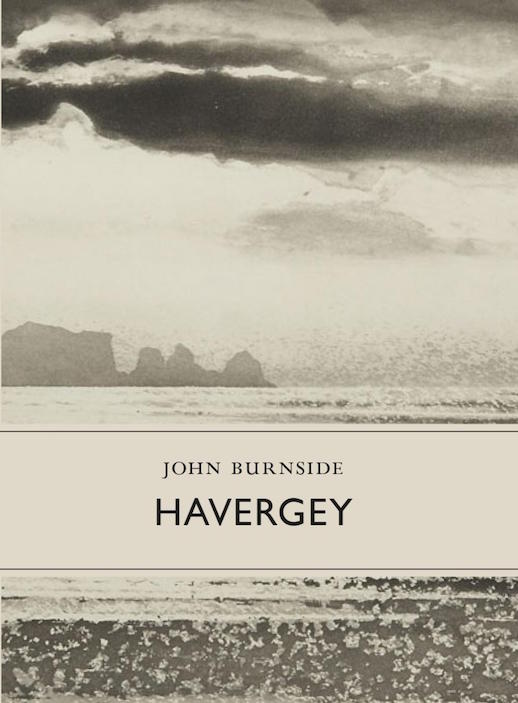 Havergey by John Burnside
Havergey by John Burnside
(Little Toller, hardback, 160 pages. Out now and available here.)
Review by Will Burns
What is this place? What is in it? What is its nature? How should men live in it? These questions are asked by the American poet Wendell Berry, in his essay A Native Hill. Taken together (and if we can ignore Berry’s rather inattentive use of the word ‘men’) they provoke a genuinely radical idea. They are questions that, in his own words, aspire ‘beyond the earth. They aspire beyond and into it. Perhaps they aspire through it.’. Capitalism, of course, challenges any notions of the human species living towards or through either the earth, or its attendant extra-human natures. The history of capitalism, from the Dutch Republic to its apparently current end game insists upon constant expansion, constant growth, and a constant assertion of the primacy of the human species. Geographical expansion has provided not only the continual renewal of raw materials cheap enough to maintain the value of commodities, but also access to the free, unpaid work of both human and extra human natures that is the true engine of capital’s value theory. Settling for less in the landscape or in consumption of it, is simply not an option when appropriation is the true necessity. Capital’s history is of course one of exploitation, but just as importantly it is one of appropriation — of the unpaid work of extra-human nature, from massive deforestation in Europe, through the mining of precious metals, to dumping waste into the ocean and atmospheres. And it is this aspect to capitalism-in-nature, with its voracious appetite for using up the finite that has brought us both into the anthropocene and perhaps into the climactic phase of capitalism-in-nature.
The inhabitants of John Burnside’s titular island of Havergey are dealing with some of these ideas from what we might call ‘the other side’ of the kind of environmental catastrophe that can, at times, feel impending. They are the inhabitants of an island that has come to offer refuge from a series of epidemics and diseases that have wiped out vast numbers of the earth’s population. The island and its estate features across time – it is the site, chosen for being ‘sufficiently out of the way’ for an experiment involving time travel in order to ascertain what weather changes humanity might face (and of course have co-produced) by the year 2050. The experiment works, and the pilot arrives on the same island in January 2056. On opening his capsule he is met by Ben, who explains his role as a ‘Watcher’ in the community that now occupy the island. While being kept in quarantine, through conversations with Ben and by reading the documentary evidence left by the inhabitants of the island over the previous forty years, the new arrival (who rather enigmatically half-introduces himself as John early in the book) learns how the demise of the estate — in both its hierarchical sense and its actual human population — has allowed a new society, and one which displays an antithetical set of values to those it has replaced.
The human population on earth, we learn, has been reduced from over nine billion to around two, and with that has come a reversal of some of the environmental violence that human over-population has lead to (and that we as readers are culpable for). The engine of the book, much the same as Thomas More’s Utopia, is the revelation of knowledge and how that revelation allows for a kind of philosophical, political and social discourse to take precedence over plot. So as John begins to read excerpts from the diaries or letters of the characters who have come to be seen as founders in this new community, writings and thoughts take on the narrative heft and allow a kind of authorial sleight of hand that goes right back to More — where we detect the argument of the author doing its work through his characters. So Burnside is able to posit critical views on the farcical nature of wind turbine planning and placement, the surprising recovery of the environment around Chernobyl, or the wrong-headedness of established capitalist ideas of property ownership, and how that privileges the position of the human within the natural world. ‘As far as High Follansbie was concerned, everything here — the island, the gardens, the fish in the water, the people, everything was his…’.
The history of Havergey in the period that John has spent travelling through time becomes a kind of pressure point for all that we, and John, have come to understand as modernity. The social relations that underpin our ideas about property, family, love, friendship, work are all exposed: as fragile, breakable, even naive, under the stress of the kind of catastrophe that has occurred. They aren’t robust enough to cope with the inevitability of a way of life defined by consumption and growth running out of material with which to continue, either. Even romantic love, perhaps critiqued as yet another kind of commodity dualism, here fails to withstand. It is this sense of coming to entirely different understandings, a way of seeing humanity-in-nature as opposed to the dualism of society/nature, or a way of living together that might be truly communal, that underpins the book, which becomes a defence of the possibility of this way of living, a way that refutes the primacy of the human species. Perhaps even more radically, the book is a powerful assertion that the harm which afflicts the human (over)population is no bad thing, that ‘…the catastrophe that threatens a degrading society is not its punishment, but its remedy.’
*
Havergey is available here in the Caught by the River shop, priced £12.00.
Will Burns on Caught by the River / Twitter